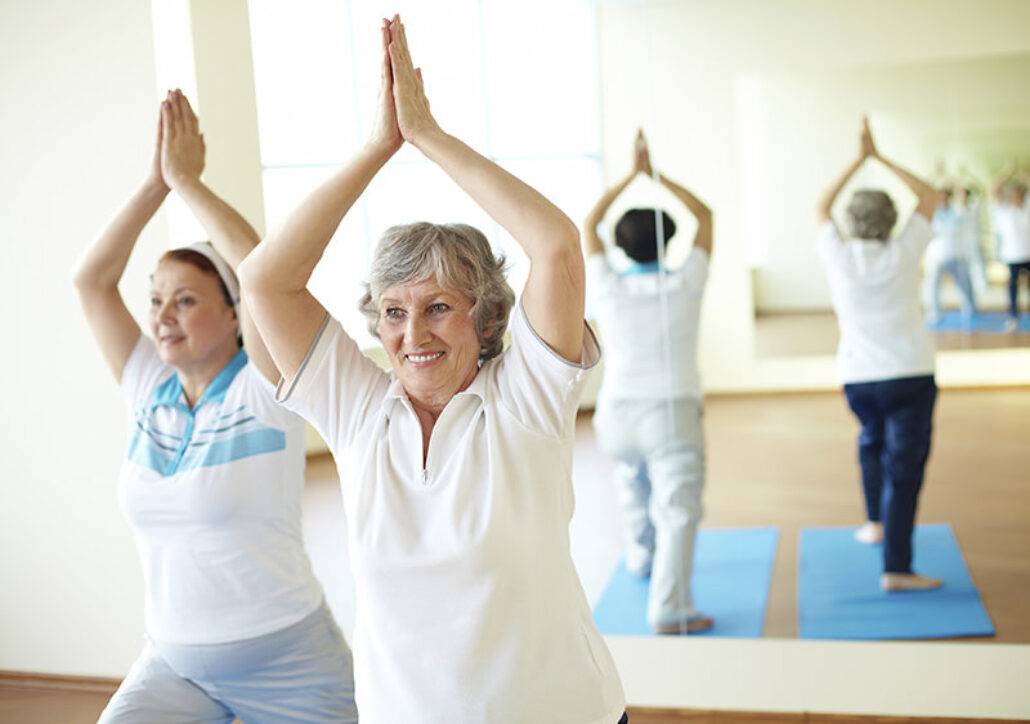When your joints feel painful, it can be challenging to stick with your exercise program. Understanding the objectives behind your routine might be just the motivation you need.
Exercise is one of the best things we can do for ourselves, but even the healthiest of us can find it hard to stick with an exercise program. If you are coping with aching osteoarthritic joints, exercise may be the last thing you want to face. That’s exactly the reason that we want to give you extra encouragement, because exercise keeps osteoarthritic joints moving and lubricated; an exercise program will help you maintain function and build muscle strength to support your joint.
Physical and occupational therapists are a great resource for both education and support. They can help you with exercises to maintain your activities and accomplish daily tasks, and encourage you to stick to your goals. Whether you are a self-starter, or are working with a therapist, we’ve got some goals to help you maximize benefits for your joints.
- Aim for a better range of motion. Focus on increasing joint range of motion to improve mobility and flexibility. Even when joints are swollen or painful, try to gently move the joint as far as it can go, and then see if you can push just a little further.
- Resistance builds strength. Your own body weight can provide all the resistance you need to build stronger muscles. Try simply sitting in a chair. Lean forward, and stand by pushing up with your thigh muscles, and without using your arms. Exercises like these may seem basic, but over time, they will help you become stronger.
- Cultivate endurance. Aerobic exercise strengthens your heart and lungs, and that increases your endurance. Stay away from high impact exercise, or activities that jar your joints, but definitely enjoy walking, swimming and bicycling.
- Build balance. Whether you are practicing yoga, tai chi, or simply take the time to balance on one foot for up to 30 seconds, you are maintaining stability and reducing the chance of injury due to a fall.
By keeping flexibility, strength, endurance, and balance in mind, you’ll be contributing to your health, and protecting the lifestyle you enjoy.
When to seek treatment for your arthritis
Arthritis doesn’t have to spell the end of an active life. If you are experiencing worrisome symptoms or persistent pain, the renowned arthritis specialists at Summit Orthopedics can help. We work with you to confirm a diagnosis and develop an appropriate conservative treatment plan. If nonsurgical treatments fail to support your lifestyle goals, fellowship-trained orthopedic surgeons will consult with you and discuss appropriate surgical options. Summit is home to innovative joint replacement options. Our Vadnais Heights Surgery Center is one of only two surgery centers nationally to receive The Joint Commission’s Advanced Certification for Total Hip and Total Knee Replacement.
Start your journey to healthier joints. Find your arthritis expert, request an appointment online, or call us at (651) 968–5201 to schedule a consultation.
Summit has convenient locations across the Minneapolis-St. Paul metro area, serving Minnesota and western Wisconsin. We have state-of-the-art centers for comprehensive orthopedic care in Eagan, MN, Plymouth, MN, Vadnais Heights, MN, and Woodbury, MN, as well as additional community clinics throughout the metro and southern Minnesota.
More resources for you
- Arthritis: Many Types Cause Joint Pain
- Living Well With Arthritis
- Osteoarthritis And Your Joint Health
